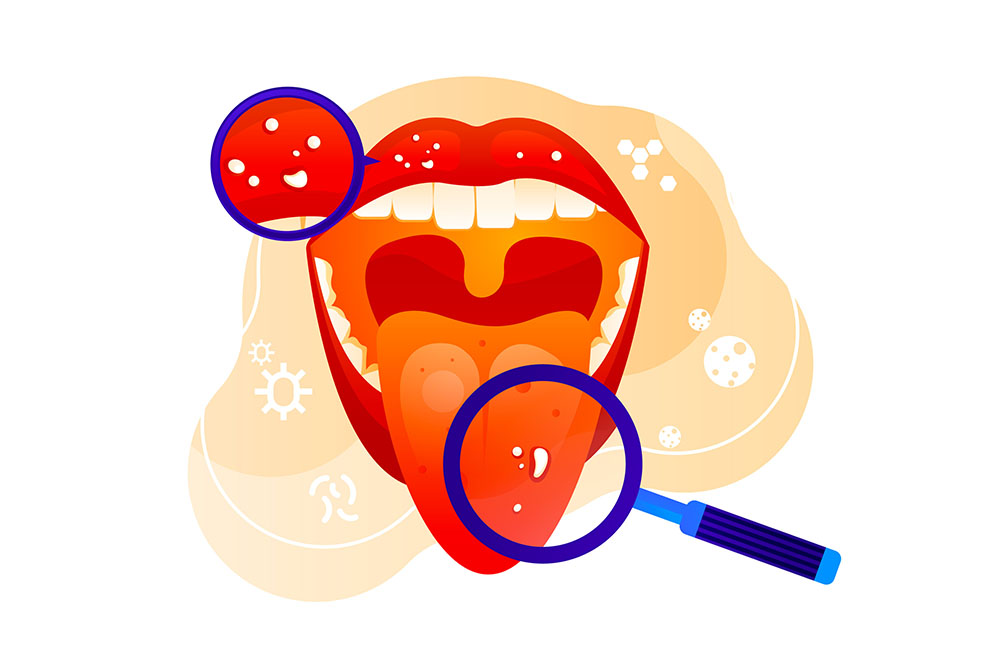
Halitosis is the medical term for bad breath. Everyone can get bad breath after eating things like garlic or onions. But bad breath that doesn’t go away (chronic halitosis) could mean you have an oral health problem or a condition that affects another part of your body. Bad breath is a symptom of many different conditions. In other words, it’s like a warning message from your body. Finding the root cause of halitosis is the first step in treating this problem.
How common is bad breath (halitosis)?
Halitosis is a common disease that affects approximately 1 in 4 people worldwide. A research study that combined the results of 13 medical journal articles found that bad breath affects about 31.8 percent of the population.
What are the symptoms of halitosis?
The main symptom of bad breath is bad breath that does not go away. The smell may be strong enough for others to notice.
What are the most common causes of bad breath?
The most common cause of bad breath (halitosis) is lack of oral and dental hygiene. Without proper oral hygiene—such as brushing, flossing, and routine dental cleanings—harmful bacteria invade the mouth and multiply out of control. This can lead to several oral health problems such as bad breath, cavities and gum disease.
What factors cause bad breath?
While poor oral hygiene is the most common cause of bad breath, it is not the only cause. There are several other conditions that can cause bad breath, including:
dry mouth
Saliva helps to clean the mouth, so if the body does not produce enough saliva, it can lead to halitosis. Smoking can cause dry mouth and also increase the risk of gum disease. In addition, some medications can cause dry mouth.
Head and neck cancers
Symptoms of cancer of the mouth or oropharynx (the oropharynx is between the nose and mouth) include sores that do not heal, mouth pain, difficulty swallowing, a lump in the neck, and unexplained weight loss.
gastroesophageal reflux disease (GERD)
This is a digestive disorder in which stomach acid or fluid leaks into the esophagus, the tube that carries food from the mouth to the stomach.
Tonsil stones
When food gets stuck in the tonsils at the back of the throat. Sometimes it turns into calcium deposits called tonsil stones.
gum disease
Gingivitis can cause redness, swelling, and bleeding caused by plaque, a sticky layer that builds up on the teeth and can be removed by brushing and flossing. Untreated gingivitis can lead to periodontitis, which damages the gum tissue and can lead to tooth and bone loss around the tooth.Trench mouth is an advanced form of gum disease that can include severe pain, bleeding, fever, and fatigue.Trench mouth is also called “trench mouth” because it was a common disease for soldiers in the trenches during World War I.
Infection in the nose, throat, or lungs
For example, people with pneumonia cough up a foul-smelling liquid.
diabetes
People with diabetes have an increased risk of developing gum disease—and gum disease can make diabetes more difficult to manage because it can raise blood sugar.
Liver disease or kidney disease
When the liver and kidneys are working properly, toxins are eliminated from the body. But in people with liver or kidney disease, these toxic substances are not eliminated. This can lead to bad breath (halitosis).
Sjogren’s syndrome
This autoimmune disease can lead to muscle pain, dry eyes, dry skin, and dry mouth (often associated with halitosis). 
What does it mean if you constantly have bad breath?
If you have chronic halitosis, it may mean you have gum disease. Although this is not always the case. Halitosis can also be a symptom of the conditions listed above. If you have bad breath that won’t go away, talk to your dentist. If halitosis is due to poor oral hygiene, a dental cleaning or periodontal (gum) procedure should help. If you have healthy teeth and gums, halitosis may be related to a problem elsewhere in the body.
How do I know if my mouth smells?
If you have a bad taste in your mouth, you probably have bad breath that others can smell. To be sure, consult your dentist. Do I understand that my mouth smells?
How is bad breath (halitosis) treated?
The treatment of halitosis depends on the underlying cause of this problem. For example, if bad breath is caused by poor oral hygiene, cleaning your teeth and improving oral hygiene at home will likely help. But if bad breath is a symptom of another disease in another part of the body, the doctor can help you in diagnosis and proper treatment. Sometimes, the dentist may recommend special mouthwashes to fight certain bacteria in the mouth.
How can I get rid of bad breath forever?
As mentioned above, treating the underlying disease is the only treatment for bad breath. Gum and mints only mask the problem. Once it is determined what is causing the halitosis, a treatment plan can be tailored to your specific needs.
How to prevent bad breath (halitosis)?
Good oral hygiene is the best way to keep your breath clean and fresh. Here are some general guidelines:
- Brush twice a day, for at least two minutes each time, and floss once a day. Remember to clean your tongue with a tongue cleaning brush or toothbrush.
- Use antibacterial mouthwash without alcohol.
- Visit the dentist for regular checkups and cleanings. For some people, it may be every six months. But others may need more frequent visits to monitor their oral health.
- Drink plenty of water to prevent dry mouth.
- Increase saliva production by using sugar-free gum, sucking on sugar-free candies, or eating healthy foods that require a lot of chewing. A dentist may recommend or prescribe products that can produce artificial saliva or help the body produce saliva.
- Avoid alcohol, caffeine, and tobacco products because they can dry out the mouth.

What is the correct way to brush your teeth?
Here are some tips and tricks for brushing your teeth properly:
- Use a soft toothbrush. Make sure the size and shape allow you to reach all areas of your mouth.
- Replace your toothbrush at least every three to four months.
- Hold your toothbrush at a 45-degree angle to your gums and use short, tooth-width strokes. Make sure you reach the outside, inside and top of each tooth.
- Do not squeeze your brush too hard. Vigorous brushing or using a hard brush can cause gum recession.
What is the correct method of flossing?
Interdental cleaning is as important as brushing. Floss can clean places that a toothbrush cannot reach. To use dental floss correctly:
- Cut off about 45 cm of thread and wrap it around your middle fingers.
- Use your thumbs and forefingers to hold the yarn tight so that 2 to 5 inches of it is between your fingers.
- Guide that middle section between your teeth, wrap the floss around one tooth (shape C) and brush up and down the length of that tooth 7-10 times.
- Now wrap the floss around the adjacent tooth and repeat these steps.
If you haven’t flossed, there may be some bleeding and discomfort for the first few days, but it should go away.
How to get rid of bad breath?
Most people can get rid of bad breath by treating the underlying disease, which can be as simple as improving your oral hygiene routine. If chronic bad breath is due to an underlying condition, it may take some trial and error to figure out what works for you. The dentist may need to try different medications or change medication doses. Or they may want to do more tests to determine the exact cause.
Should you go to the dentist to get rid of bad breath?
If you are maintaining good hygiene and still have bad breath, consult your dentist. Some people build up plaque faster than others and may need more frequent cleanings. You can also see a periodontist (gum disease specialist) to see if gum disease is the cause of bad breath. If the dentist doesn’t find any problems with your oral health, such as cavities or gum disease, your GP can determine if another condition is causing your bad breath.Summary Halitosis is a common condition that can cause embarrassment or low self-confidence. But bad breath is nothing to be ashamed of. This is often just your body’s way of telling you that something isn’t quite right. The good news is that you can usually get rid of bad breath by treating the underlying condition.

